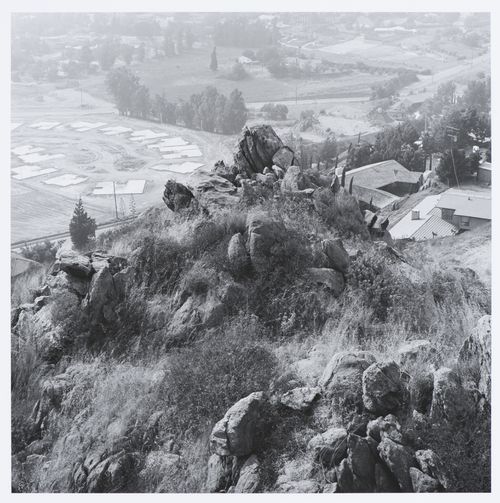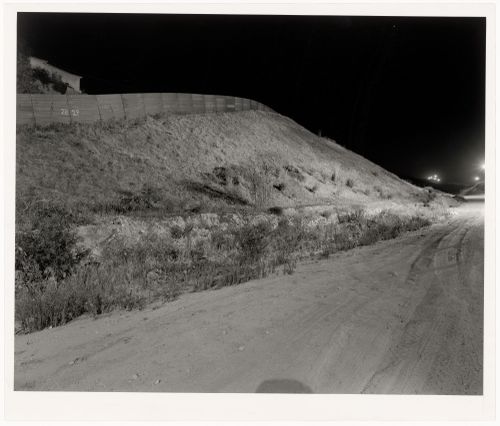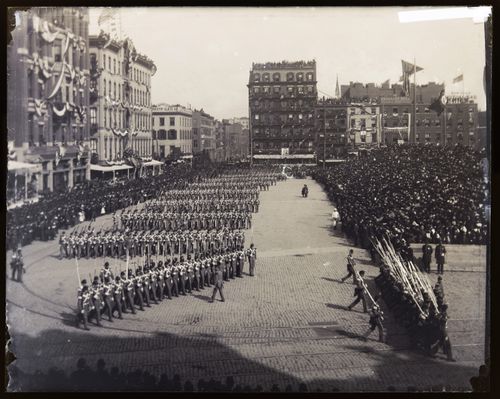PH1985:0201
1978
PH1997:0062
Description:
- The series "Running Fence 1997" focuses "on the first 14 miles of the border fence that separates the United States and Mexico, beginning at the Pacific Ocean and ending in the Otay Mountains.... [It] analyzes the "idea" of the border and explores its iconography, the border being a subject that is of extreme importance to the public as the world proceeds towards greater globalization. [Geoffrey] James has written of the project: "[The border fence] was built by the US Army Corps of Engineers in 1994, out of recycled metal landing strip - the most visible symbol of what is known as Operation Gatekeeper. Because the steel sheets are placed in the ground so that their ridges run horizontally, a man can hop over the fence with ease; and no Mexican child ever seems to be impeded from retrieving a soccer ball from US territory. The real barrier to illegal immigration from Mexico into the USA is less visible: hundreds of buried sensors linked to a central computer, nightscopes, helicopters and Border Patrol Agents in white Broncos."" (Evans).
architecture, engineering
1997
Partial night view of the United States-Mexico border fence from the United States side, San Diego County, California, United States, and Tijuana, Baja California, Mexico
Actions:
PH1997:0062
Description:
- The series "Running Fence 1997" focuses "on the first 14 miles of the border fence that separates the United States and Mexico, beginning at the Pacific Ocean and ending in the Otay Mountains.... [It] analyzes the "idea" of the border and explores its iconography, the border being a subject that is of extreme importance to the public as the world proceeds towards greater globalization. [Geoffrey] James has written of the project: "[The border fence] was built by the US Army Corps of Engineers in 1994, out of recycled metal landing strip - the most visible symbol of what is known as Operation Gatekeeper. Because the steel sheets are placed in the ground so that their ridges run horizontally, a man can hop over the fence with ease; and no Mexican child ever seems to be impeded from retrieving a soccer ball from US territory. The real barrier to illegal immigration from Mexico into the USA is less visible: hundreds of buried sensors linked to a central computer, nightscopes, helicopters and Border Patrol Agents in white Broncos."" (Evans).
architecture, engineering
drawings
AP056.S1.1997.PR01.002
circa 1997
drawings
circa 1997
drawings
AP056.S1.1997.PR01.003
circa 1997
drawings
circa 1997
drawings
AP056.S1.1997.PR01.004
1998
drawings
1998
photographs
PH1991:0142
1930s-1940s
photographs
1930s-1940s
photographs
PH1991:0148
1930s-1940s
photographs
1930s-1940s
photographs
PH1991:0149
1930s-1940s
photographs
1930s-1940s
PH1984:0977:198
Description:
US Army parade, visible in the background are buildings by Krakauer Bros. Piano Fortes, and Penrhyn Slate Company.
ca. 1860-1880
Elevated view of a United States Army military parade in New York, New York, United States of America
Actions:
PH1984:0977:198
Description:
US Army parade, visible in the background are buildings by Krakauer Bros. Piano Fortes, and Penrhyn Slate Company.
Project
CI007.S1.1950.PR01
Description:
This project series documents Mies van der Rohe unexectuted design for Caine House, a private house project commissioned by Leon J. Caine in Winnetka, Illinois, United States, in 1950. The material in this series was produced in between 1950 and 1969. The series contains views of the presentation panels for the house photographed by Casimir W. Milewski.
1950-1969
Caine House, Winnetka, Illinois, United States (1950)
Actions:
CI007.S1.1950.PR01
Description:
This project series documents Mies van der Rohe unexectuted design for Caine House, a private house project commissioned by Leon J. Caine in Winnetka, Illinois, United States, in 1950. The material in this series was produced in between 1950 and 1969. The series contains views of the presentation panels for the house photographed by Casimir W. Milewski.
project
1950-1969


